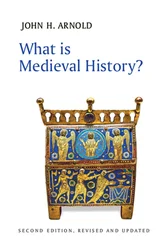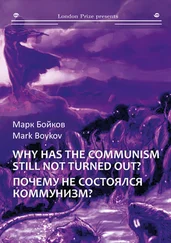The precise details of the route from a biased sex ratio to antisocial behavior in humans is not thoroughly understood, but one possible physiological link is that remaining unmarried increases levels of testosterone—often simply referred to as “T”—which in turn influences decision making and behavior.
Should all this T in China be a cause for worry?
The differences between societies that allow polygyny and those that don’t are potentially illustrative. In societies with polygamy, there are, for obvious reasons, larger numbers of unmarried men than in societies that prohibit polygyny. These unmarried men compete for the remaining unmarried women; they evince a greater propensity to violence and engage in more criminal behavior than their married counterparts. Indeed, cross-national research shows a consistent relationship between imbalanced sex ratios and rates of violent crime. The higher the fraction of unmarried men in a population, the greater the frequency of theft, fraud, rape, and murder. The size of these effects are nontrivial: Some estimates suggest that marriage reduces the likelihood of criminal behavior by as much as one half.
Further, relatively poor unmarried men historically have formed associations with other unmarried men, using force to secure resources they otherwise would be unable to obtain.
While increasing crime and violence in Asian countries with imbalanced sex ratios is a reason to worry in itself, the issue is not solely the potential victims of crimes that might occur because of the sex-ratio imbalance. Evidence indicates that surpluses of unmarried young men have measurable economic effects, lowering per-capita GDP.
China, of course, plays a crucial role in the modern heavily interconnected world economy and is the largest or second largest trading partner for seventy-eight countries. Although many Americans worry about China “overtaking” the United States—as if economics were a zero-sum game—the real danger stems from the ripples of a potential Chinese economic slowdown, whether from civil unrest or otherwise. Regional economies, such as South Korea and Taiwan, would no doubt be hard hit, but Europe and the United States would suffer disruptions of both supply and demand, with unpredictable but possibly substantial economic consequences.
The route from unmarried men to global economic meltdown is perhaps a bit indirect, but the importance of China in the world economy makes such threats to stability something to worry about.
TECHNOLOGY MAY ENDANGER DEMOCRACY
HAIM HARARI
Physicist; former president, Weizmann Institute of Science; author, A View from the Eye of the Storm: Terror and Reason in the Middle East
Science is the source of numerous cures for medical, social, and economic issues. It is also an incredibly exciting and beautiful intellectual adventure. It leads to new technologies, which change our lives, often for the better. Could these technologies endanger the foundations of liberal democracy? This may sound crazy. Yet we should all worry about it. It is a real threat, which should concern every thinking person, if he or she believes that science can advance humanity and that democracy is the least bad system of governance.
A serious mismatch is gradually developing, step by step, between two seemingly unrelated issues: the penetration of science and technology into all aspects of our life, and liberal democracy as practiced throughout the free world. Intrinsically, science and technology are neither good nor bad; it is how we use them that may lead to far-reaching benefits or negative results. Their applications, often planned and deliberate, are sometimes unintended and accidental. The developing conflict between the consequences of modern technology and the survival of democracy is unintended but pregnant with great dangers.
Let us count seven components of this brewing trouble:
First, a mismatch of time scales. Many issues tackled by decision makers are becoming more complex—multidisciplinary, global, multigenerational. Education systems, research policy, social security, geopolitical trends, health insurance, environmental issues, retirement patterns—all have time scales of decades. The time lag from discussion to decision, execution, and consequences is becoming longer, thanks to our growing ability to analyze long-term global effects and to more years of education, work, and retirement for the average person. On the other hand, the time horizon of politicians is always the next election—anything between two and seven years. Modern technology, while producing longer time scales for the problems, creates instant online popularity ratings for reigning office holders, pressing them for short-term solutions. We live longer, but think shorter.
The second component is another type of time mismatch. Twitter, texting (or SMS, in European jargon), Internet comments or “talkbacks,” and similar one-liners make the old superficial 60-second TV news item look like an eternity. But real public issues cannot be summarized by micro sound bites. This encourages extremism and superficiality and almost forces politicians to express themselves in the standard 140 characters of Twitter, rather than in 140 lines, or 140 pages of a decent position paper. The voting public is exposed only to ultra-brief slogans, while a younger generation is becoming homo neo-brevis : the next evolutionary phase of the human race, with a brief attention span, affinity for one-liners, and narrow fingers for the smartphone.
The third issue is the growing importance of science literacy and quantitative thinking for decision makers. Today’s world introduces us to energy issues, new media, genetic manipulations, pandemic flu, water problems, weapons of mass destruction, financial derivatives, global warming, new medical diagnostics, cyberwars, intellectual property, stem cells, and numerous other transformations that cannot be handled by people who cannot comprehend scientific arguments accompanied by simple quantitative considerations. Unfortunately, the vast majority of senior decision makers in most democracies lack these rudimentary abilities, leading to gross errors of judgment and historic mistakes that will affect many generations to come. We need scientifically trained political decision makers.
The fourth is the fact that electability to high office requires talents unrelated to those required for governing and leading. Major countries often elect senior office holders with credentials that would normally not get them a job as the CEO of a minor company. The democratic process starts not with a proper job description but with an ability to charm TV viewers and appear either as “one of the guys” or as a remote, admired prince (or, even better, both). TV and other electronic media make sure that most voters never see the real person but only an image on the screen, augmented by all possible add-ons. A talent for speech delivery, including the ability to read from a teleprompter while appearing to improvise, is more crucial than experience, familiarity with global issues, and leadership .
The fifth danger is the mad rush for “transparency,” enhanced by immediate Web dissemination of all revealed items. It is almost impossible to have a proper frank high-level discussion, weighing outside-the-box options before rejecting them, toying with creative ideas, and expressing controversial views, when every word spoken may appear within days on the screens of a billion computers and smartphones, summarized by one sentence and often out of context. It is impossible to write an honest recommendation letter or a thorough well-balanced evaluation of an organization or a project when confidentiality is compromised and public disclosure is idolized. Small wonder that talented and experienced people with proven abilities in other fields shy away from entering politics, when “transparency” threatens to destroy them. One fears that future elected and appointed senior officials will have to post the results and pictures of their latest colonoscopy on the Web in the name of transparency.
Читать дальше












